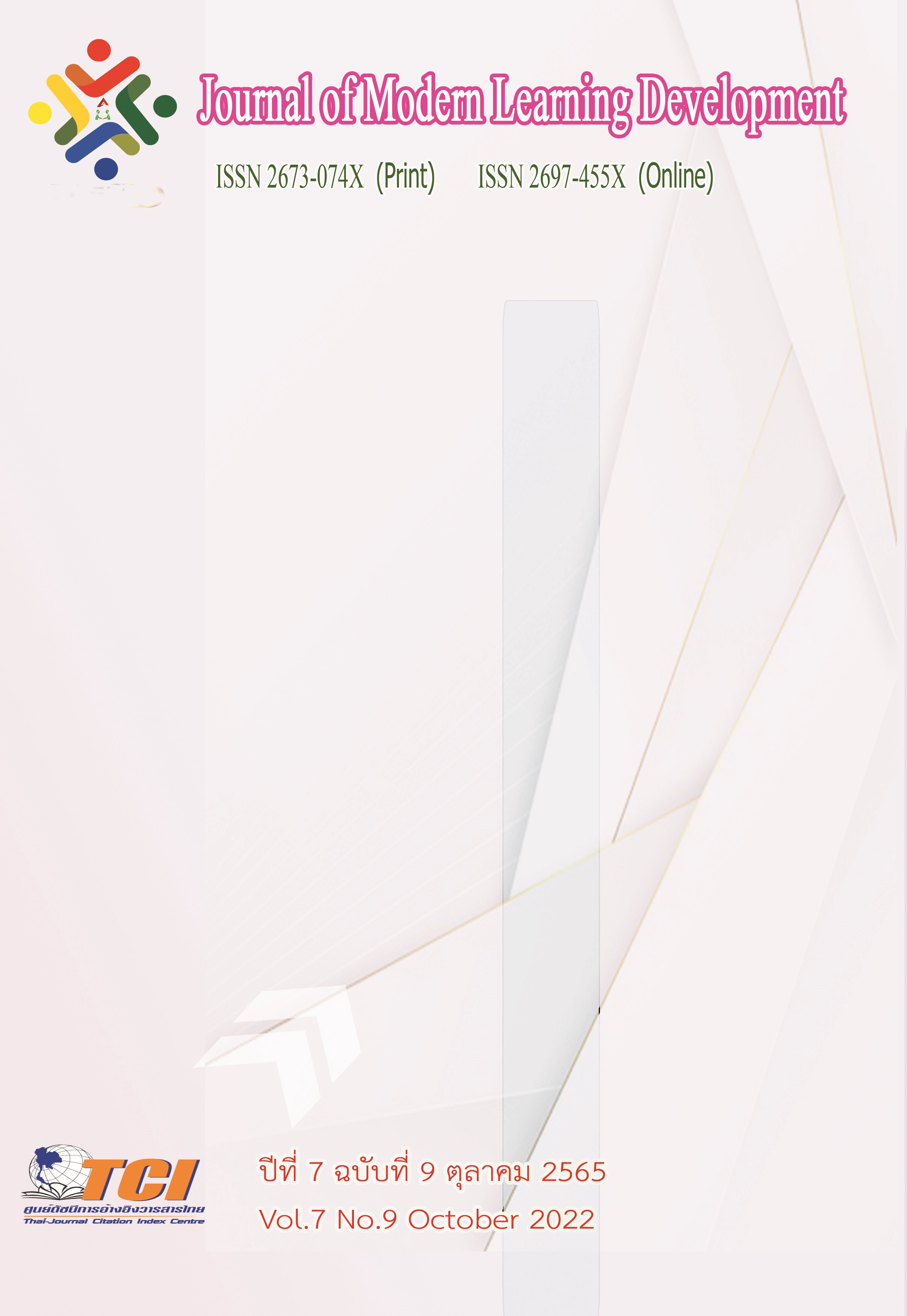Increasing Effective Communication with the Elders during the Coronavirus- 19 Information Pandemic
Main Article Content
Abstract
The objectives of this research were to study: 1) patterns of communication with the elders during the Coronavirus 19 information pandemic, 2) problems and limitations of communication with the elders during the Coronavirus 19 information pandemic, and 3) guidelines for increasing effective communication with the elders during the Coronavirus 19 information pandemic. This qualitative study applied document research, in-depth interviews with 10 key informants, and a focus group discussion with 10 elders and persons involved with elders. Data were analyzed by using a thematic analysis approach by capturing important issues or essence hidden in the data and linking them to the concepts and then to be concluded as research results.
Major findings: 1) patterns of communication with the elders during the Coronavirus 19 information pandemic were formal and informal in forms of downward and upward communications, 2) problems and limitations of communication with the elders were found in 4 categories: knowledge of content that needs to be communicated, timeliness, message, channel, and communication skill, and 3) to increase effective communication with the elders during the coronavirus 19 information pandemic, it could be done by applying the SMILE Model of communication that focuses on 5 categories, which were: sender, message, intention, listener, and environment. .
Article Details
References
กรมสุขภาพจิต. (2561). กรมสุขภาพจิต. (2561). รับสังคมผู้สูงวัย! ออนไลน์. สืบค้นเมื่อ 20 มกราคม 2565. แหล่งที่มา: https://dmh.go.th/news-dmh/view.asp?id=27472
ณัฏฐา นันทตันติ และนิธิตา นันทตันติ. (2563). สภาพปัญหาและความคาดหวังในการใช้สื่อเพื่อส่งเสริมสุขภาพของผู้สูงอายุในจังหวัดพะเยา. วารสารมนุษยศาสตร์และสังคมศาสตร์ มหาวิทยาลัยพะเยา, 8 (2), 176 – 195.
เมธาวี จำเนียร และเมธี แก้วสนิท. (2561). การสื่อสารสุขภาพเพื่อสร้างเสริมสุขภาวะที่ดีของคนในชุมชน. สมาคมสถาบันอุดมศึกษาเอกชนแห่งประเทศไทย ในพระราชูปถัมภ์ สมเด็จพระเทพรัตนราชสุดาฯ สยามบรมราชกุมารี. 24 (2). 155 – 166.
ศูนย์ต่อต้านข่าวปลอม ประเทศไทย (Anti-Fake News Center Thailand). (2565). ข่าวปลอมต้องเช็คก่อน. ออนไลน์. สืบค้นเมื่อ 20 มกราคม 2565. แหล่งที่มา: เข้าถึงได้ที่ https://www. antifakenewscenter.com
Beheshta Momand, Brenda Barth, Winnie Sun, Adam Dubrowski. (2022). Bridging the Gap in Health Personnel and Elderly Communication Training: What Can We Learn From Speech Codes Theory. Online. Retrieved June 20 2021. from https://www.cureus.com/articles/ 80134-bridging-the-gap-in-health-personnel-and-elderly-communication-training-what-can-we-learn-from-speech-codes-theory
Ji Sook Kang and Sung Ji Park. (2019). The Impact of Communication on the Overall Quality of Life in Elderly Koreans. Online. Retrieved June 20 2021. from: https://www.koreascience. or.kr/article/JAKO201927561417878.pdf International Journal of Advanced Culture Technology Vol.7 No.3 58-64 (2019)
Kristen Jack. (2019). Effective Communication with Older People. Online. Retrieved June 20 2021.from:https://www.researchgate.net/publication/333467284_Effective_communication_with_older_people


